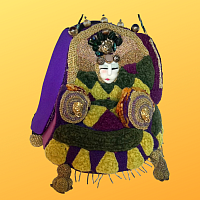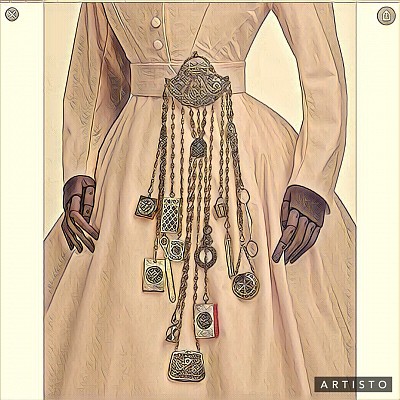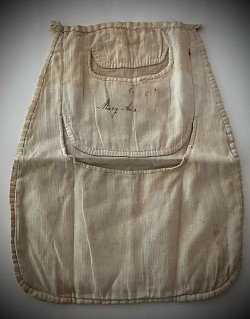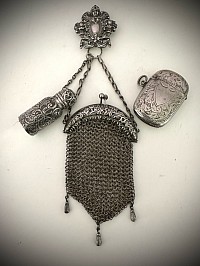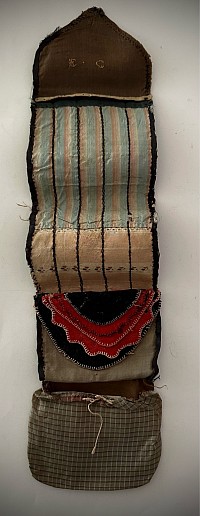Underskirt Pockets & Chatelaines
Before the purse, there was a Chatelaine (tool holder)
Women’s purses, handbags, bags, and their predecessors the pocket and chatelaine and hussif all share a single purpose. They hold objects that women use.
They are FUNCTIONAL OBJECTS.Their design parallels the role of the woman in society at various points in history. They reflect the owner’s status and wealth.
The materials they are made of, like any other commodity are based on cost, availability, new inventions, the style of the era.
THE WOMAN’S under skirt POCKET
These pockets were never seen. They were tied under women’s large skirts and were accessible through a long slit. They were in use from the mid 1600’s to the late 1800’s .
When styles changed in the Regency period, small purses replaced the Pocket.
Pictured below is a rare example of a double design. It has the name of the owner, and it is missing the ties that were used around the waist.
Pockets are hard find because they functional everyday objects, well worn and frequently thrown away. ‘PINTREST’ Online has examples of Pockets, including embroidered examples given as wedding gifts. Click on the Pocket to see it full size.
The Chatelaine - a woman’s hanging tool holder for functional pursuits
Chatelaines were used by many classes of society. For the wealthy gold and ornate decorations were the materials of choice. Removable objects hung from attached chains. Some items were purses, sewing implements, perfumes, note holders useful for the lady of the manor, while keys could be the choice for the servant in charge of the household. They were either pined, or more often hooked to a garment at the waist. In 1828 the Chatelaine became a fashion item.
Huswif - a folding holder for sewing needles and thread
These Georgian/Regency fold up’s are often made of salvaged fabrics. Other Sewing roll ups go into Victorian times.
